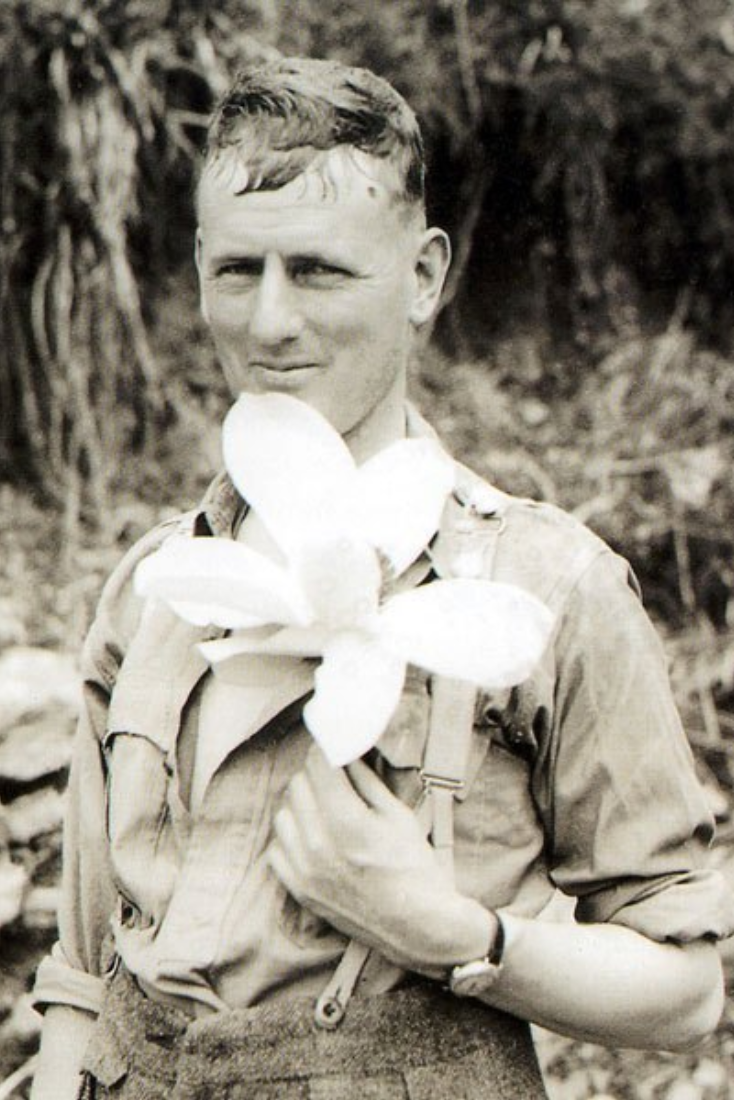Frank Smythe
Valley of Flowers
Today is the birthday of the great Himalayan and Alpine mountain climber and mountaineering writer Frank Smythe.
Frank had a diverse range of interests, which he mastered - including photography, collecting plants, botany, and gardening.
He is most remembered for his mountaineering and for discovering and naming the Valley of Flowers in the Western Himalayas in India.
During his lifetime, Frank would go on seven expeditions to the Himalayas, where he especially enjoyed botanizing and taking pictures.
In 1931, Frank stumbled on the Valley of Flowers along with two other English mountaineers after they got lost. The climbers had just finished ascending Mount Kamet, and they were looking for a place to escape bad oncoming weather. The Valley enchanted them, and the flowers made it seem like they were in a fairyland. When Smyth returned to England, he wrote a book called Kamet Conquered, and in it, he named the area the Valley of Flowers. Well, the name Frank gave the Valley caused a sensation.
In one of his later books, Frank wrote about the moment he discovered the Valley:
“Within a few minutes, we were out of the wind and in the rain which became gradually warmer as we lost height. Dense mist shrouded the mountainside and we paused, uncertain as to the route when I heard Holdsworth, who was a botanist as well as a climbing member of the Expedition exclaim, “Look!”
I followed the directions of his outstretched hand.
At first, I could see nothing but rocks. Then suddenly my wandering gaze was arrested by a little splash of blue, and beyond it were other splashes of blue; a blue so intense it seemed to light the hillside.
Holdsworth wrote:
"All of a sudden I realized that I was simply surrounded by primulas. At once, the day seemed to brighten perceptibly. Forgotten were all the pains and cold and lost porters. And what a primula it was! Its leek-like habit proclaimed it a member of the nizalis section. All over the little shelves and terraces, it grew, often with its roots in running water. At the most, it stood six inches high, but it's flowers were enormous for its stature, and ample in number— sometimes as many as thirty to the beautifully proportioned umble and in the color of the most heavenly French blue [and] sweetly scented.’
In all my mountain wanderings I had not seen a more beautiful flower than this primula. The fine raindrops clung to its soft petals like galaxies of seed-pearls and frosted its leaves with silver. “
Now you can see how Frank's writing inspired so many people to make a pilgrimage to the Valley. For the people who make the trek, the Valley of Flowers is a seven-day trip from Delhi. It is now a protected national park.
As the name implies, it is a lush area famous for the millions of alpine flowers that cover the hills and slopes and nestle along icy flowing streams. Through most of the year, the Valley of Flowers remains hidden, buried under several feet of snow throughout a seven-to-eight-month-long winter. In March, the melting snow and monsoon activate a new growing season. There is a brief 3-4 month window when the Valley of Flowers is accessible – generally during the months of July, August, and September.
In 1937, Frank returned to the Valley where he especially enjoyed botanizing. He gathered specimens and seeds and documented his discoveries. The Valley of Flowers is home to over 500 varieties of wildflowers, and many are still considered rare. Along with daisies, poppies, and marigolds, there are primulas and orchids growing wild. The rare Blue Poppy, commonly known as the Himalayan Queen, is the most coveted plant in the Valley.
This post was featured onThe Daily Gardener podcast:
helping gardeners find their roots,
one story at a time






